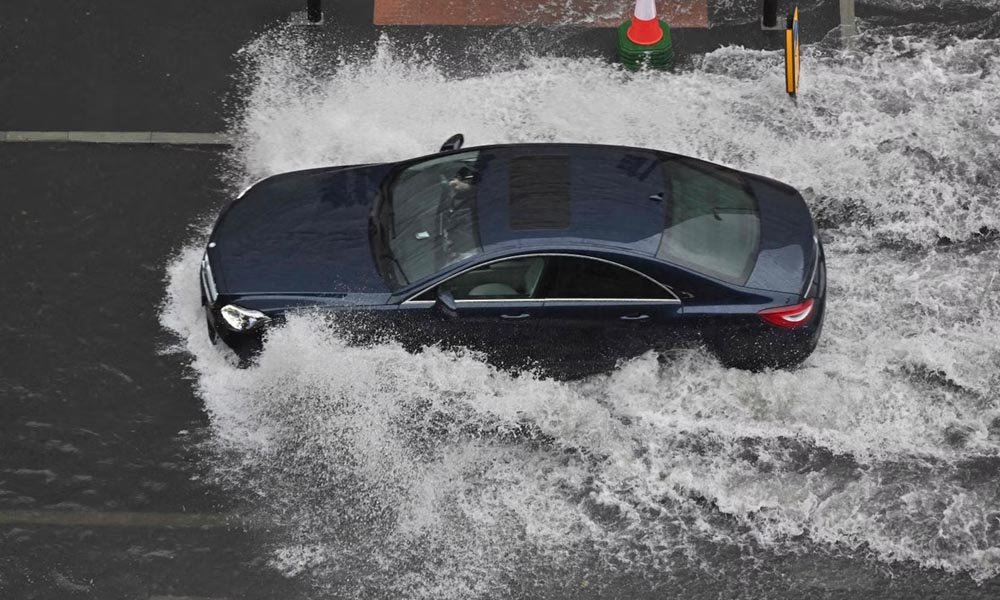It is dangerous to drive in the heavy rain or flood. More than that, the wet weather might increase breakdown numbers because the dampness results in engine problems. So, if you do not drive correctly, the electrical system will be flooded when you drive through the water.
If you have to drive in such conditions, you should pay attention to tips for driving safely in heavy rain. This article will show you how to do that and how to reduce the opportunities of breakdown or accidents.
How should you prepare when driving in the heavy rain?
- Check the tread depth of your tires. The standard tread depth in the summer is about 3 mm and in the winter is roughly 4 mm.
- Fill up your car gas tank with fuel.
- Check if the windshield wipers are functional.
- Charge your phone in case you may have any difficulties on the trip.
- Listen to the local news on the radio to catch up with the floods, road closures, accidents, and forecasts.
How can you drive safely in rain conditions?
Aware of hydroplaning
Hydroplaning will occur if your car travels through the water without any contact with the road surface. This phenomenon happens due to the significant lack of traction. Thus, drivers should not make sudden motions. Instead, you should stay calm, not apply the brake before steering in the way you want.
Aware of the slippery roads
As you can guess, the road will be very slippery when it has not rained for a moment. When the road is dry, engine oil or grease would build up on the ground. These substances then will combine with water, making it slicking to drive.
Keep distance from buses or large trucks
Some means of transportation are relatively dangerous as they are big and drive carelessly sometimes. Besides, the fume from the car might hinder your vision, making it harder to see the road ahead. Therefore, you should not pass them. In case you have to do that, you should pass as fast as you can, but safely.
Control stability and traction
Traction is the most important feature in maintaining grip. Whereas stability helps monitor the steering input. Also, it will intervene with the braking system or reduce the engine power. Hence, it is better to pay attention to these two features on rainy days.
Inflate your tires appropriately
It means you have to check and replace any worn tires if necessary for safety in the rain. Tires are the second most important aspect of the operation of a car. One tip when driving on rain-soaked roads is that you should avoid puddles and reduce speed to prevent hydroplaning.
Keep headlights turned on
The headlights will be a useful tool for other vehicles to spot your car better. More importantly, you cannot use the high beams as it blinds other commuters. Besides, the additional light bounces off the droplets, leading to more distraction.
If your car windshield is fogged up by the rain, you should turn the window defrosters on. Also, turn on the air conditioner as it will clear the fog away as quickly as possible.
Bring an emergency kit
It is vital to prepare and keep an emergency kit in your car. When stocking the emergency kit and some essentials, you and your passengers will be ready for anything that comes your way.
How can you drive through floods and water?

After the rain, there will be a lot of puddles on the road of different sizes. Getting over these puddles improperly might cause some severe damage to the vehicle and cost a fortune to repair.
Here are some tips for you to handle the situation:
Size up the body of water first (you should get out of your car to check it). You may not check the bottom or measure its depth if it is muddy water. In this case, you should take an object such as a stick to measure the bottom point.
If the puddle is too deep, it is recommended to find other ways to reach your destination. These days, cars’ doors possess modern seals that are helpful in keeping water out. However, your car might be buoyant due to this feature, making you stranded.
In case the puddle is just shallow, you should try to spot some objects as they might cause some damage to the wheels, suspension, or tires. So, it would be great if you find another way to choose another safe path.
After handling the puddle successfully and determining your route, always keep your car in low gear. Simultaneously, you increase your engine revs, helping you maintain the momentum and create the bow wave. Hence, you will not be bogged down.
Finally, you should brush the pedal gently on the exit. By doing that, you can create the friction and evaporate the moisture.
What should you do if your car breaks down during the rain?
Firstly, you need to close the bonnet so that you can prevent the electrical system from being soaked. Then, wait for the RAC Breakdown Patrol.
If you have to get over the deep water, making the engine cut out, you should not try to restart it. Instead, you should turn the hazard light on, and call for mechanics or any assistance. After that, you bring your car to the auto stores to have a professional check.
As you can guess, your engine will get sucked by the water, damaging crucial components in your car. So, if bad things happen, you might need to replace the new engine, which will cost you a huge amount of money.
The bottom line
Briefly, driving safely in heavy rain is extremely vital. By taking some precautions above, you can keep control of your vehicle even in the worst situations. Additionally, you should keep calm and pull over if essential. Then, wait until the rain lets up and keep going most safely.


